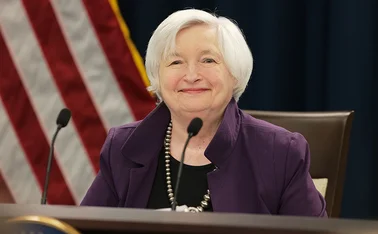
The challenges for central banks
Managing financial stability is nothing new for central banks

Central banks conduct monetary policy to achieve the objective of price stability – in most cases their primary goal – and in turn this fosters broader macroeconomic stability. But often central banks also have responsibilities relating to financial stability, as this is a key precondition for price stability. In fact, it is hard to imagine any instance of financial instability arising in any segment of the financial markets that does not eventually impact somehow on the transmission mechanism of monetary policy and, ultimately, on price stability.
Following the emergence of the global financial crisis, close attention is now being paid to the responsibilities of monetary policy for financial stability and, more generally, to interactions and possible conflicts between policies that foster price and financial stability. This sharpened focus on financial stability should come as no surprise, since it has historically been a dominant concern of central banks and, in many countries, a fundamental factor in their original establishment.1, 2, 3
Accordingly, the first question to ask is: what is really new today in central banks’ prevailing attention to financial stability? In response, I believe two main elements of novelty stand out. First, the crisis has dramatically demonstrated that price stability alone might not suffice to prevent the build-up of financial imbalances and systemic risks, even in conditions of steady economic growth. Second, ‘non-standard’ or ‘unconventional’ monetary policies have been adopted by major central banks in advanced countries to fend off unprecedented threats to the stability of entire financial systems and to sustain the very functioning of financial intermediaries and markets.
The widespread use of unconventional monetary policy, to different degrees and in various forms, constitutes a breakthrough in the relationship between financial stability and central banking. While they are tailored to the specific circumstances and problems of the various economies, unconventional policies ultimately aim at ensuring the proper functioning of the monetary transmission mechanism, and considerations of financial stability have undeniably come to play a critical role in their design. Indeed, the increasing importance of financial stability to monetary policy decisions has not only resulted in major innovations to central banks’ toolkits and operational procedures; it has also revived a long-standing debate and raised a number of institutional and operational questions.
On the institutional front, the discussion focuses on whether the mandates of central banks should be expanded to make financial stability an explicit objective alongside price stability.4 This might be deemed controversial, but perhaps unnecessarily so if one considers that financial stability is a precondition for price stability. So, in my view, there is no need to question the current objectives of monetary policy – in the case of the eurosystem, price stability in the medium term. In particular, I do not think financial stability should become an explicit objective on a par with price stability, for two main reasons: first, the crisis has made the benefits of our monetary policy framework more – not less – evident, with medium-term inflation expectations remaining well-anchored throughout; and second, adding this explicit objective might blur responsibilities, increase moral hazard and create potential conflicts.
At the same time, however, I do believe that, without question, preserving financial stability lies fully within the responsibilities of central banks, even where other authorities might share tasks in this area. The crisis has not called into question the assumption that over longer horizons there is no trade-off between the objectives of price stability and financial stability – rather, there are synergies. As a result, even in the absence of a formal mandate for financial stability, central banks have long factored in developments in the financial sector – most notably in the money, credit and asset markets – into the conduct of monetary policy.5
Risks to financial stability are usually associated with credit booms, i.e. rates of credit growth in excess of their trend values, and their typical consequence: asset price bubbles. Banking crises have regularly been preceded by unusually rapid and sustained increases in private sector credit aggregates, leverage and asset prices, most notably in the real estate sector. The 2007–08 global turmoil provided stark confirmation of these empirical patterns. The European Central Bank (ECB) works to tame the risks for financial stability by monitoring monetary and credit aggregates closely within the monetary pillar of its strategy. Many central banks, whether they operate only with an inflation target or, like the Federal Reserve, under an explicit dual mandate, typically assess the likely impact of sustained asset price rises on future output and inflation, possibly through wealth effects.
However, the sovereign debt crisis that struck Italy in the summer of 2011 has made it clear that severe risks to financial stability can build up even in the absence of credit or asset price booms. These risks materialised through adverse sovereign-bank links prompted by doubts about the sustainability of the public finances. These vicious circles, with different underlying causes and triggers, affected other euro area countries; the sovereign crisis became systemic in the aftermath of the European authorities’ decision in the summer of 2011 to involve private sector investors in the restructuring of Greece’s public debt. The fragmentation of euro area financial markets that followed the sovereign debt crisis impaired the transmission mechanism of the single monetary policy; it ultimately posed risks to price stability for the area as a whole and called for a comprehensive response by the ECB, including via unconventional measures.
While the crisis has strengthened the consensus that the preservation of financial stability falls among the responsibilities of central banks (with or without a formal mandate), in operational terms, opinions concerning the relationship between monetary policy and financial stability are much more diverse. The crisis has challenged the conventional view – known as the ‘Jackson Hole consensus’ – that asset price movements should induce a monetary policy response only insofar as they affect future output and inflation. The enormous economic and social costs of the crisis have greatly reinforced the alternative view, which I share, that in some circumstances central banks need to act pre-emptively, even when price stability is not at stake, to defuse risks to financial stability that can morph into a systemic crisis.
In practice, this ‘macro-prudential’ orientation would be implemented by conducting monetary policy in a more systematic and symmetrical way (i.e. through the cycle); not only the normal easing of monetary conditions in downturns, but also a preventive tightening in upturns that feature rapidly growing credit volumes and asset prices, even when price stability is not immediately threatened.6,7
If it is agreed that monetary policy should not be restricted to taking account of systemic financial stability risks, but may need to respond directly to them, then the key question becomes: what are the most appropriate tools? And here, notwithstanding the broader endorsement of a more pre-emptive approach, opinions are no less diverse than before the crisis. The most controversial question boils down to whether the policy rate should be used to ‘lean against the wind’, that is, to directly address risks to financial stability or, rather, whether the risks are more appropriately tackled by micro-prudential and, above all, macro-prudential policies, conducted either by the central bank itself or by a separate authority.
The pre-crisis consensus questioned the use of monetary policy to counter asset price booms on the basis of such well-known objections as the difficulty of timely and reliable detection of asset price bubbles and the lags in the transmission of monetary policy impulses. But perhaps the crucial objection was that the policy rate is too blunt a tool. This feature would imply that only quite sizable rate increases could be expected to have a material impact on credit growth and asset prices,8 and this only at the risk of causing collateral damage to the rest of the economy. These arguments underpinned advocacy of the ‘clean’ view on the use of the policy rate, namely cutting it aggressively to mitigate the economic fallout once the asset bubble bursts.
The case for pre-emptive use of the policy rate – the ‘lean’ view – has been bolstered by the crisis. It rests on three main reasons. First, recent research on the risk-taking channel of monetary policy transmission offers theoretical arguments and empirical evidence that the impact of the policy rate on credit – which is assumed to vary over the business cycle through shifts in banks’ leverage – is stronger than had been previously thought. The policy rate is seen as a key determinant of leverage, in that the balance-sheet liabilities of financial institutions consist mainly of short-term borrowing, the cost of which is closely linked to short-term interest rates, such as the ECB’s rate on the main refinancing operations or the Federal Reserve’s federal funds target rate. Here, the focus on leverage might also help to sidestep such controversial issues as whether the central bank can detect asset price bubbles and whether the policy rate can actually influence them.
Second, although there is some preliminary evidence that macro-prudential policy can mitigate the consequences of unravelling financial imbalances, its ability to prevent the build-up of these risks in the first place, and thus to serve as a true alternative to policy rate increases, is more dubious. This asymmetry is recognised also by the Basel Committee on Banking Supervision in its guidance for the use of the countercyclical capital buffer, one of the new macro-prudential tools that have been made available as a result of recent global regulatory reform. Moreover, like the policy rate itself, macro-prudential measures too may suffer from a ‘dosage’ issue; that is, magnitude appears to be crucial to effectiveness.9
Third, unlike the more narrowly targeted macro-prudential tools, the policy rate would actually have superior macro-prudential power because of its unique capacity to affect aggregate financial conditions – to ‘get in all of the cracks’, in Jeremy Stein’s fashionable characterisation of monetary policy.10
Although the macro-prudential use of the policy rate is gaining ground, the ‘clean’ view continues to have highly authoritative advocates. It is worth noting, in fact, that the policy rate’s presumed ‘crack-filling’ power, perhaps the strongest rationale to justify a more proactive use of monetary policy, is also put forward as a counterargument for not using it. The fact that higher interest rates would permeate the entire financial system is seen as “just another way of saying that raising interest rates is a blunt tool”.11
An actual example of the debate on the macro-prudential use of the policy rate relates to the tightening of monetary policy by the Sveriges Riksbank that began in July 2010 and peaked in July 2011. Deemed a leaning-against-the-wind move out of concern for financial stability, and specifically the risk that maintaining a lower repo rate could have increased the already high ratio of household debt to disposable income, this policy stance has been questioned on the basis of a counterfactual analysis emphasising the macroeconomic costs in terms of below-target inflation and higher unemployment.12
The crisis has prompted a rethinking of the central banks’ proper attitude in the face of excessive credit growth and asset price booms. Monetary policy is increasingly being called on to be conducted in a more pre-emptive, or ‘macro-prudential’, way and a leaning-against-the-wind use of the policy rate no longer captures only a minority of views.
In my opinion, this development owes less to stronger theoretical arguments than to the greater importance now assigned to crisis prevention in the light of the very painful first-hand experience with the economic and social costs of the financial crisis. The practical difficulties of a pre-emptive use of the policy rate are no less relevant now than before the crisis, when they were generally seen as decisive. In any case, it is even truer today that a systematic implementation of this approach must recognise the substantial uncertainty surrounding the impact of monetary policy on asset prices and that it must accordingly be backed by a larger information set, as well as such permanent characteristics in the central bank policy-setting process as judgement and caution. Transparency of policy decisions and effective communication to the public remain essential complements.
While the merits of a more active use of the policy rate are still being debated, one important legacy of the crisis is the broad consensus that macro-prudential policy should complement monetary policy, ideally by acting as a first line of defence, in countering financial imbalances that pose systemic risks.
Macro-prudential policy, in this view, would serve to address both the cross-sectional dimension of systemic risk, strengthening the resilience of the financial system to adverse real and financial shocks, and its temporal dimension, containing the accumulation of risk over the business or financial cycle (although we should be aware of its possible limits in this regard). Insofar as countercyclical macro-prudential policy is effective in moderating the financial cycle, it can support monetary policy in stabilising the economy. Furthermore, by adding a systemic perspective, macro-prudential policy can address the “fallacy of composition”13 and complement micro-prudential policies that preserve the stability of individual intermediaries.
The development of a macro-prudential framework is still at an early stage, and several aspects of these policies, most notably how they will work in practice, require further analysis. A major issue I want to highlight is the potential for conflicts – what economists usually call ‘trade-offs’ – between monetary, macro- and micro-prudential policies.14 Although as a rule, monetary policy and macro-prudential policy are best thought of as complements rather than substitutes, in recessions the latter can be subject to a lower bound similar to that faced by the former. For example, if ‘good times’ are not successfully exploited to build up macro-prudential capital and liquidity buffers, these will not be available for countercyclical release in downturns. In this case, monetary policy would be left to shoulder most of the burden.
To conclude, let me reiterate that one of the critical consequences of the crisis has been the much greater prominence of crisis prevention, which pertains not only to central banks but to the entire spectrum of macro-financial policies. This emphasis requires reliance on the broadest possible set of policies and tools, together with careful consideration of the interactions, complementarities and potential conflicts among them.
As far as monetary policy is concerned, I believe central banks should lean against the formation of financial imbalances and not be timid in reacting against the early signs of systemic financial instability. The pre-emptive use of the policy rate at some point cannot be ruled out a priori. However, framing the discussion exclusively on whether the policy rate should be used to counteract an asset price or credit boom may be too narrow an approach. Crisis prevention should begin well in advance by closely monitoring leverage and credit aggregates, which more often than not are the immediate cause of soaring asset prices.
As noted, macro-prudential policy can be most helpful in this regard; but micro-prudential policies too must be retained as instruments of choice for crisis prevention. The relaxation of lending standards is normally a major contributor to rapid credit growth. And it is certainly not a coincidence that a strong micro-prudential regulatory framework, accompanied by effective supervision – sufficiently intrusive and capable of saying ‘no’ – is a distinguishing feature of the financial systems, including those of some large euro area countries, that did not display such vulnerabilities to unsustainable booms in the real estate sector and large investment in toxic structured finance products, which proved to be the main causes of many bank failures and the resulting large government bailouts.
Relying on a broader set of complementary policies and tools is crucial, particularly in the current circumstances of ultra-low interest rates. Many central banks have to walk a fine line between maintaining accommodative monetary conditions as long as necessary to support the recovery and avoid excessive disinflation, and preventing excessive the risk-taking that could subsequently generate macro-financial imbalances.
While the strength of the economic recovery varies across countries and regions, monetary conditions are set to progressively return to a more neutral stance as growth gathers momentum. Today this task is distinctly more complicated than in past episodes of monetary normalisation, such as those of 1994 and 2004 for the US. It will involve not only raising the policy rate gradually in due course, but also (perhaps above all) exiting from unconventional measures such as quantitative easing and forward guidance. What’s more, normalisation must now be achieved in an environment characterised by the massive debt overhang created by the crisis.
As the Financial Times put it on St Valentine’s Day, cheap money is a
love story with the potential to end in tears. Central banks are striving for a happier ending.
Ignazio Visco is governor of the Bank of Italy.
Notes
1. Giannini, C (2011), “The age of central banks”, Edward Elgar, Cheltenham, UK, 2011. Italian edition, L’età delle banche centrali, Bologna, Il Mulino, 2004.
2. Stein, JC (2011), “Central banking and financial stability”, Paolo Baffi Lecture, Bank of Italy, Rome, November 30.
3. Visco, I (2013), “The aftermath of the crisis: regulation, supervision and the role of central banks”, CEPR Policy Insight No. 68, December.
4. See, for example, Committee on International Economic Policy and Reform (2011), “Rethinking central banking”. The Brookings Institution, September.
5. Issing (2008) notes that an encompassing approach to monetary policy that integrates money and credit in pursuing price stability in the medium term will implicitly pay attention to financial imbalances “even if financial stability is not considered a general objective of the central bank”. The underlying assumption is that avoiding excessive growth in the monetary and credit aggregates would help prevent the emergence of unsustainable asset price rises in the first place. Issing, O (2008), “Asset prices and monetary policy”. Contribution to the Cato Institute’s 26th Annual Monetary Conference, November 19.
6. Borio, C, P Lowe (2002), “Asset prices, financial and monetary stability: exploring the nexus”, BIS Working Papers, No. 114, July.
7. Borio, C (2013), “Monetary policy and financial stability: what role in prevention and recovery?” Paper presented at the conference in memory of Curzio Giannini on Money and Monetary Institutions after the Crisis. Banca d’Italia, Rome, December.
8. A further drawback would be the inability of the interest rate to affect the speculative component (as opposed to the fundamentals) of asset prices. See Kohn, DL (2008), “Monetary policy and asset prices revisited”. Speech at the Cato Institute’s 26th Annual Monetary Policy Conference, November 19.
9. A recent example is the Swiss National Bank’s decision in January 2014 to double the sectoral countercyclical capital buffer required for mortgage loans on residential property to 2% (from 1%, set in February 2013), based on the concern that imbalances in the housing market had kept on worsening. See http://www.snb.ch/en/mmr/reference/pre_20140123/source/pre_20140123.en.pdf
10. Stein, JC (2013), “Overheating in credit markets: origins, measurement, and policy responses”. Speech at the research symposium on Restoring Household Financial Stability after the Great Recession: Why Household Balance Sheets Matter. Federal Reserve Bank of St. Louis, St. Louis, February 7.
11. Evans, CL (2013), “Financial stability and monetary policy: multiple goals, multiple tools”. Speech at the 2013 Financial Management Association Annual Meeting, Chicago, October 18.
12. Svensson, LEO (2013), “Leaning Against the leaners”, Central Banking journal, Volume XXIV, No. 2, November. Monetary policy eased starting in December 2011. See also Sveriges Riksbank (2013), “Financial Imbalances in the Monetary Policy Assessment”, Monetary Policy Report, July, for alternative scenarios associated with different repo rate paths, as well as for a comprehensive discussion on financial imbalances and monetary policy deliberations.
13. Crockett, A (2000), “Marrying the micro- and macro-prudential dimensions of financial stability”. Remarks before the 11th International Conference of Banking Supervisors, September.
14. See also the discussion in Angelini, Nicoletti-Altimari and Visco (2012), “Macro-prudential, micro-prudential and monetary policies: conflicts, complementarities and trade-offs”, Bank of Italy Occasional Papers, No. 140, November.
Only users who have a paid subscription or are part of a corporate subscription are able to print or copy content.
To access these options, along with all other subscription benefits, please contact info@centralbanking.com or view our subscription options here: subscriptions.centralbanking.com/subscribe
You are currently unable to print this content. Please contact info@centralbanking.com to find out more.
You are currently unable to copy this content. Please contact info@centralbanking.com to find out more.
Copyright Infopro Digital Limited. All rights reserved.
As outlined in our terms and conditions, https://www.infopro-digital.com/terms-and-conditions/subscriptions/ (point 2.4), printing is limited to a single copy.
If you would like to purchase additional rights please email info@centralbanking.com test test test
Copyright Infopro Digital Limited. All rights reserved.
You may share this content using our article tools. As outlined in our terms and conditions, https://www.infopro-digital.com/terms-and-conditions/subscriptions/ (clause 2.4), an Authorised User may only make one copy of the materials for their own personal use. You must also comply with the restrictions in clause 2.5.
If you would like to purchase additional rights please email info@centralbanking.com test test test








